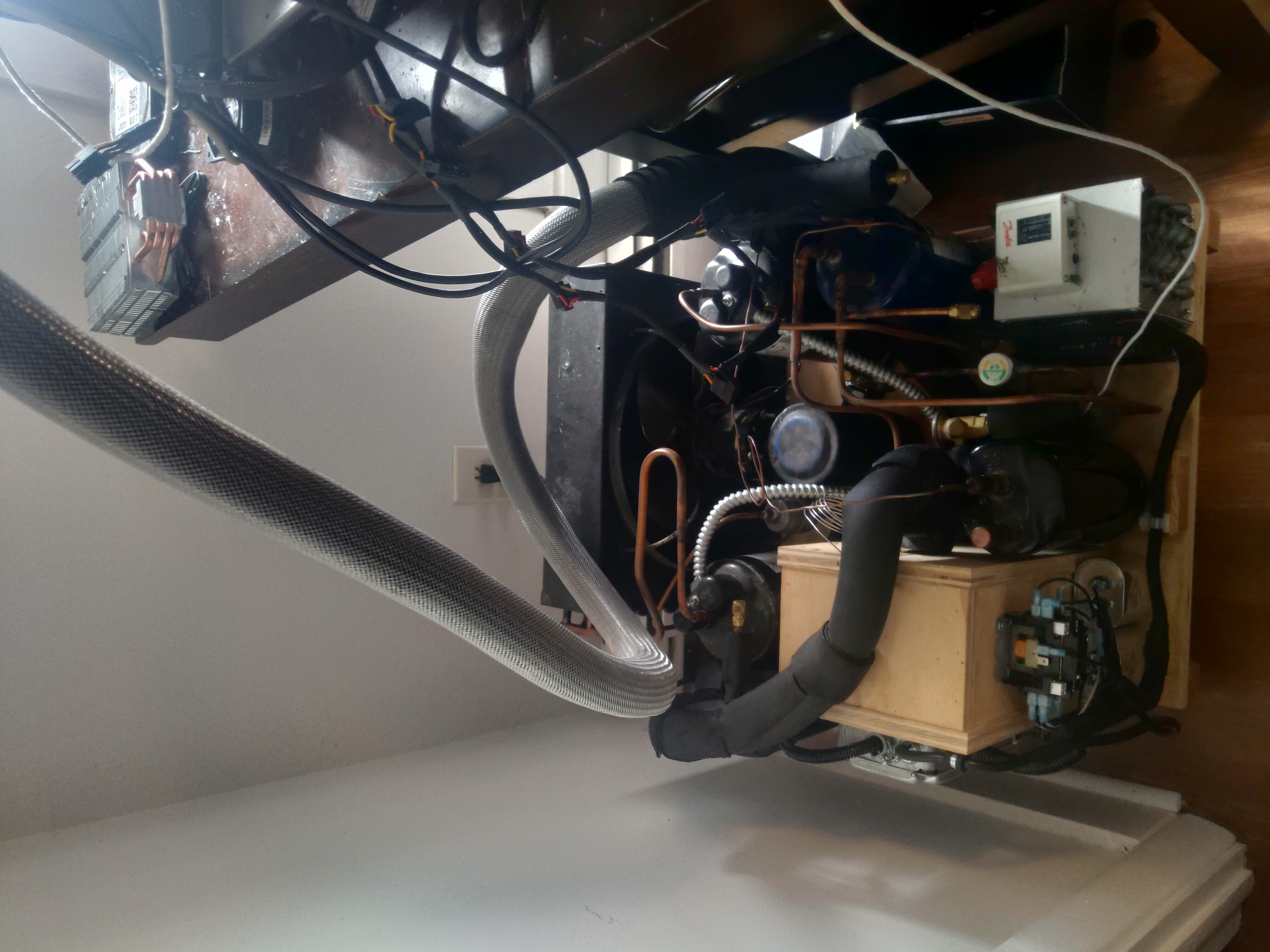Overclocker Sets Two X265 Benchmark World Records With Intel Celeron CPU
The Intel Celeron G470 hit 2.224 GHz and set single-core records at 4K and 1080p.

There’s a new top dog when it comes to the X265 benchmark. This week, overclocker Christopher “Mythical Tech” Adkins used an Intel Celeron G470-powered system to set new world records for the single-core benchmark at both 4K and 1080p.
The X265 benchmark is mutlithreaded and based on the x265 encoder that measures frames rendered per second by a CPU. Adkins hit 0.619 frames per second (fps) for the 4K record and 2.568 fps for the 1080p record with the Celeron running at a clock speed of 2.224 GHz.
“X265 is notoriously hard on the CPU and has been known to kill lots of chips,” Adkins told Tom’s Hardware.
Despite its lower clock speed compared to other and newer CPUs (the chip came out in 2013), Adkins selected the G470 because it's the most recent single-core CPU with Hyper-Threading on a consumer CPU socket that he knows of with the Intel SSE4.1 and Intel SSE4.2 instruction sets, the instruction sets the benchmark's developer said are required to run the benchmark optimally. The benchmark was developed on the Sandy Bridge-E platform, and the newer AVX instruction set is said to have no performance impact (although AVX2 on Haswell would).
But it wasn’t just about picking the right CPU. Adkins also spent around eight hours binning about 140 CPUs with the help of friends, searching for a high front-side bus (FSB) speed, which lets the processor communicate with devices connected to the chipset, a good integrated memory controller and a low enough cold bug, the point at which the temperature’s too low for the system to operate, on his cascade phase-change cooling system.
RAM choice was the second most important component decision, and Adkins went with the Corsair Dominator GT DDR3-4096 (2x 2GB), which uses Elpida Hyper integrated circuits (ICs).
“Another IC that people use is PSC, but my particular CPU did not play well with any of my [RAM] kits of PSC, so I went with my kit of Hypers,” Adkins explained.
Get Tom's Hardware's best news and in-depth reviews, straight to your inbox.
Adkins chose the other components based on what could fit his college student budget. In fact, the Asus Maximus IV Extreme-Z motherboard had two dead PCIe slots and cost the overclocker just $25. Meanwhile, a GT 710 graphics card earned its spot for its small size and lower power draw. Adkins also used a 450W EVGA power supply.

Of course, it isn’t overclocking if you’re not cooling. This record-breaking system relied on cascade phase change cooling, which sends gas through a cooling and condensing stage via two compressors.
“Most people choose to use a single-stage on Sandy Bridge (CPU microarchitecture), but I don't have one, so I had to hope my CPU did not cold bug at anything under -105 degrees Celsius,” Adkins said.
Adkins seemingly has the making of a successful professional overclocker, breaking Albrecht “Leeghoofd” Mesotten’s previous 4K, single-core record of 0.617 fps and 1080p record of 2.557 fps with his first time touching a Sandy Bridge-based processor or X265. His schedule also allowed only 24 hours to get the job done. This included 8 hours of binning and two hours getting the ISO for Windows 7, an overclocking favorite, downloaded, installed and stripped.
“I fired up the cascade and booted into the OS at 110.5 FSB, which was what the record at the time done by Leeghoofd was set with. I compared my result to his to see how far behind I was with efficiency. After checking to see what FSB I would need, I set it to 111 and started to run it and initially got a score of 0.617 [fps], which was tied for first, but I knew it was capable of more,” Adkins recalled.
“So I restarted and went up to 111.2 [FBS], which is what allowed me to get the score of 0.619 that took first place [in 4K].”

Adkins didn’t have to change any settings to then break the 1080p benchmark because the system was limited by FSB, not CPU core speed or memory. The 4K benchmark was harder to break than the 1080p counterpart, Adkins said, because of how long each run took.
“In total, the cascade was running for 11 hours straight, which caused my room to get above 90 degrees Fahrenheit, and 11 hours of sitting next to the noise a cascade makes is not too fun,” Adkins said. “But overall it was mostly down to just being lucky with being able to bin so many CPUs to take the record.”

Scharon Harding has over a decade of experience reporting on technology with a special affinity for gaming peripherals (especially monitors), laptops, and virtual reality. Previously, she covered business technology, including hardware, software, cyber security, cloud, and other IT happenings, at Channelnomics, with bylines at CRN UK.